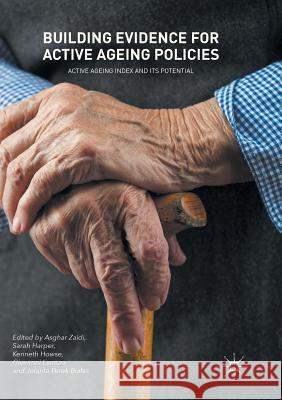Building Evidence for Active Ageing Policies: Active Ageing Index and Its Potential » książka
topmenu
Building Evidence for Active Ageing Policies: Active Ageing Index and Its Potential
ISBN-13: 9789811355493 / Angielski / Miękka / 2019 / 470 str.
Kategorie:
Kategorie BISAC:
Wydawca:
Palgrave MacMillan
Język:
Angielski
ISBN-13:
9789811355493
Rok wydania:
2019
Wydanie:
Softcover Repri
Ilość stron:
470
Waga:
0.58 kg
Wymiary:
21.01 x 14.81 x 2.51
Oprawa:
Miękka
Wolumenów:
01
Dodatkowe informacje:
Wydanie ilustrowane











